[ad_1]
It could be argued that some Mobile Device Management (MDM) software offers far too many features. This is often due to the mammoth task the developers set themselves: supporting every mobile device possible.
Jamf takes a different approach, focusing on iOS and macOS devices (with some minimal Android support). But would you ditch a universal MDM in favor of a platform that only supports half (or less) of your workforce’s mobile devices?
Here we take a look at the key features and pricing of Jamf to help you settle on the right MDM for your organization.
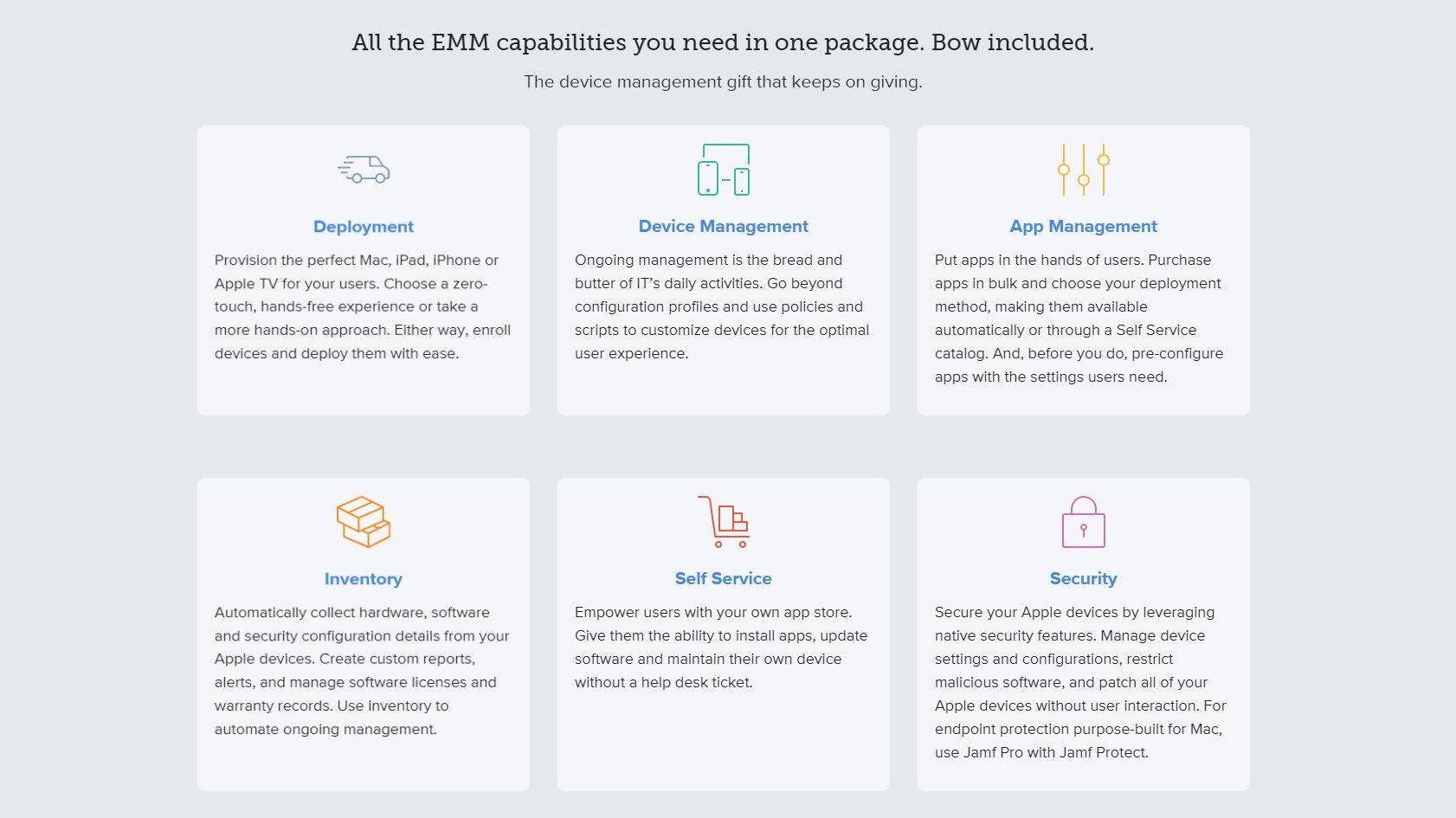
Features
Jamf offers a range of tools to increase IT efficiency and user productivity by deploying apps, managing mobile device configurations, enforcing security settings, and collecting inventory information.
Jamf has several device management products, including its MDM offering, which has three sub-solutions: Jamf Pro, Jamf School, and Jamf Now.
Jamf Pro has a user-friendly interface that simplifies enrolment and software deployment. It enables the provisioning of the perfect setup on macOS, iOS, iPadOS, or even Apple TV. Device management supports policies and scripts for general and specific user configurations, and apps can be deployed in various methods, even through an organization-specific app store. Users can choose optional apps, install necessary ones (or have them remotely rolled out), and even have the option to update their devices to reduce help desk time drains.
Jamf Pro has a comprehensive inventory tool that audits hardware, software, and security details. It is ready for custom reports, license management, and warranty records. For security management, Jamf leverages the security features found in Apple devices, with remote patching and system configuration.
The admin-side Jamf user interface promotes straightforward workflows for device deployment and management, and the flexibility to create customized scripts for macOS systems. For the end user, an on-demand app portal can be accessed to reduce issue tickets.
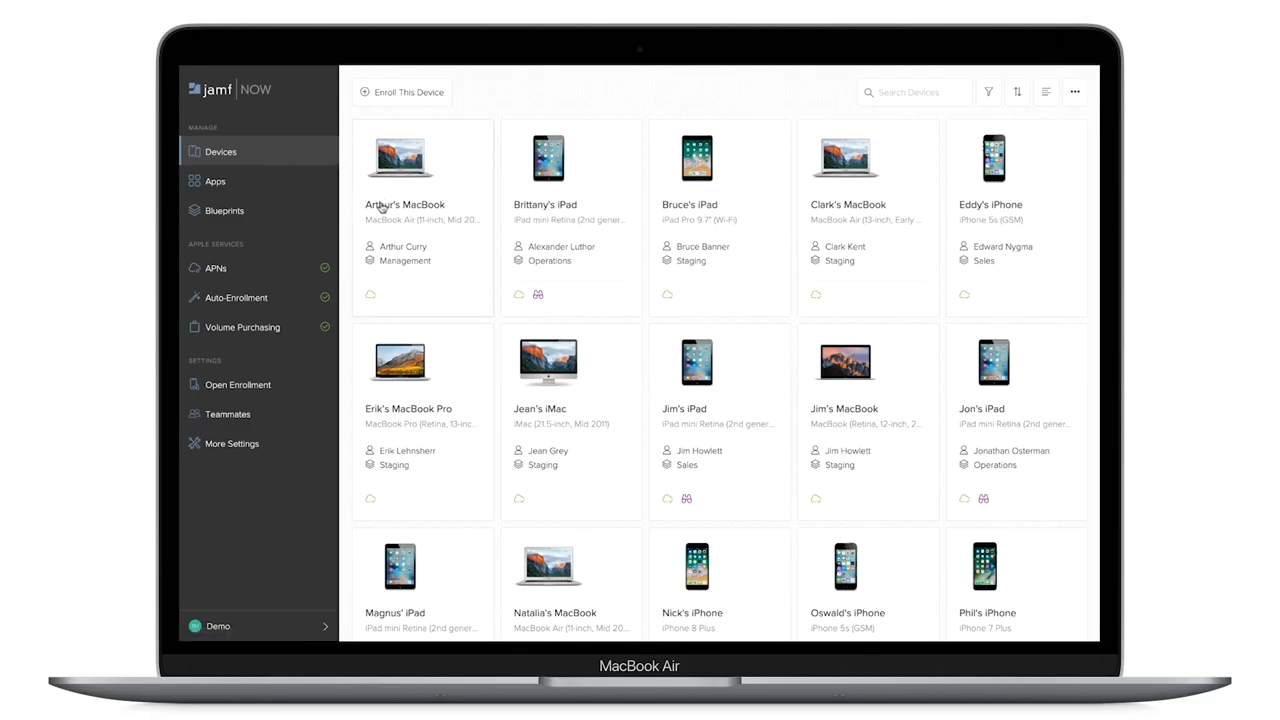
Jamf Now offers a somewhat slimmed down experience, with a simple, IT-free setup and pre-built templates for managing devices and users. There is also an inventory tool. Jamf Now Plus upgrades the basic package to allow the deployment of third-party and in-house apps, deployment of custom profiles and telephone support.
It’s very difficult to spot what MDM features Jamf is missing, if any. In terms of managing Apple devices across a small, medium, or full-sized organization, it appears to have everything.
Installation and setup
Accessing Jamf is done through a dedicated cloud console connected to your account, which you have set up. This means that the installation and setup process is handled for you, making it almost ready to use right out of the box.
To enroll your end users, they need to go to the dedicated enroll page on the cloud server, choose their device type, and provide personal information to be added to the system. It’s a straightforward process that will quickly prepare the device for provisioning, auditing, and tracking if needed.
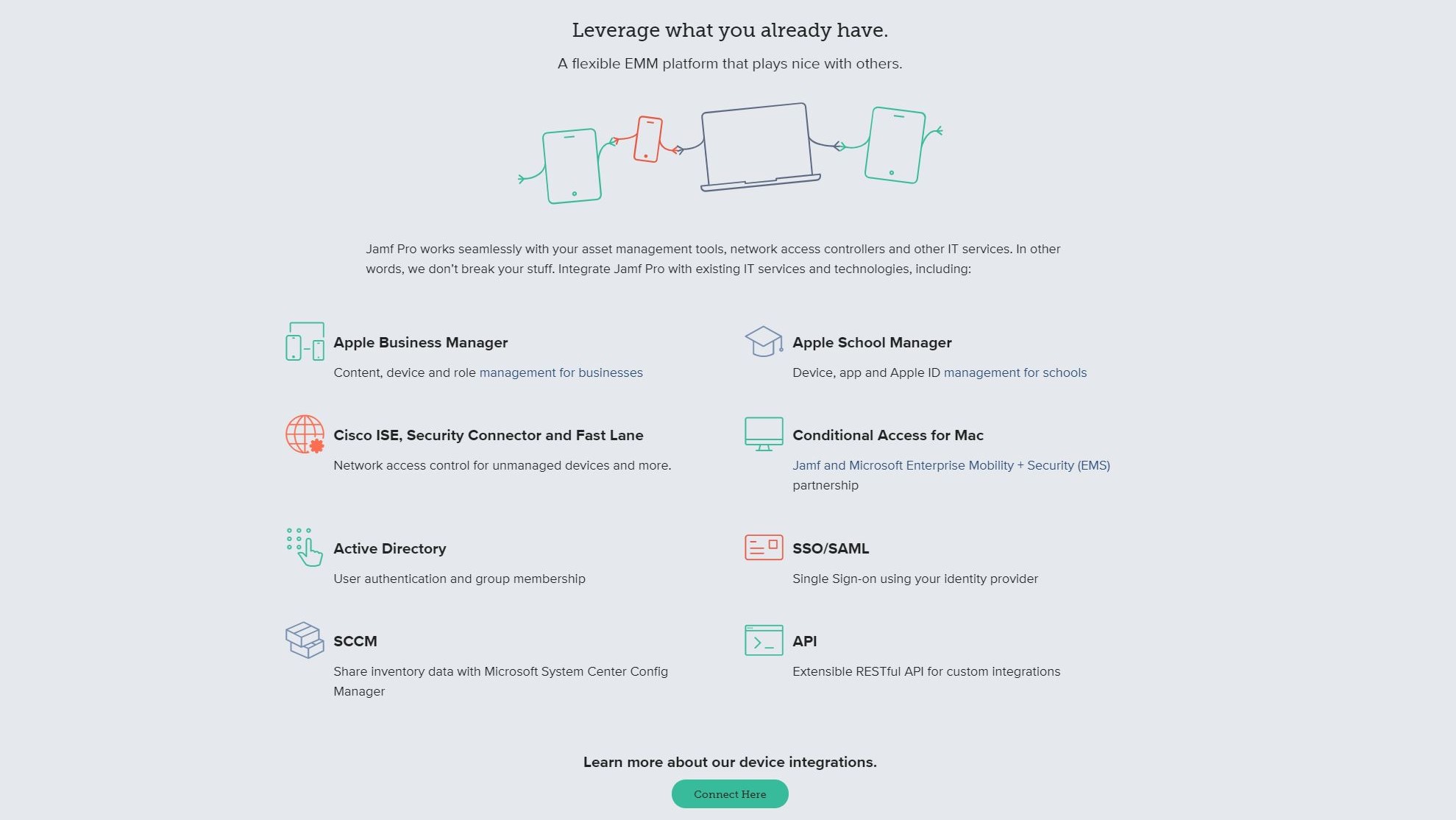
Compatibility
With Jamf’s cloud interface, system administrators can access the MDM console from anywhere, making it incredibly convenient. The system is hosted remotely in the cloud, so dialing in is unnecessary. All the features and more are available on your computer, whether you use Mac, Windows, or Linux.
Log in using the correct credentials through a browser like Google Chrome or Mozilla Firefox. It’s important to note that the MDM console is not recommended for use on a mobile device due to the extensive range of features and settings.
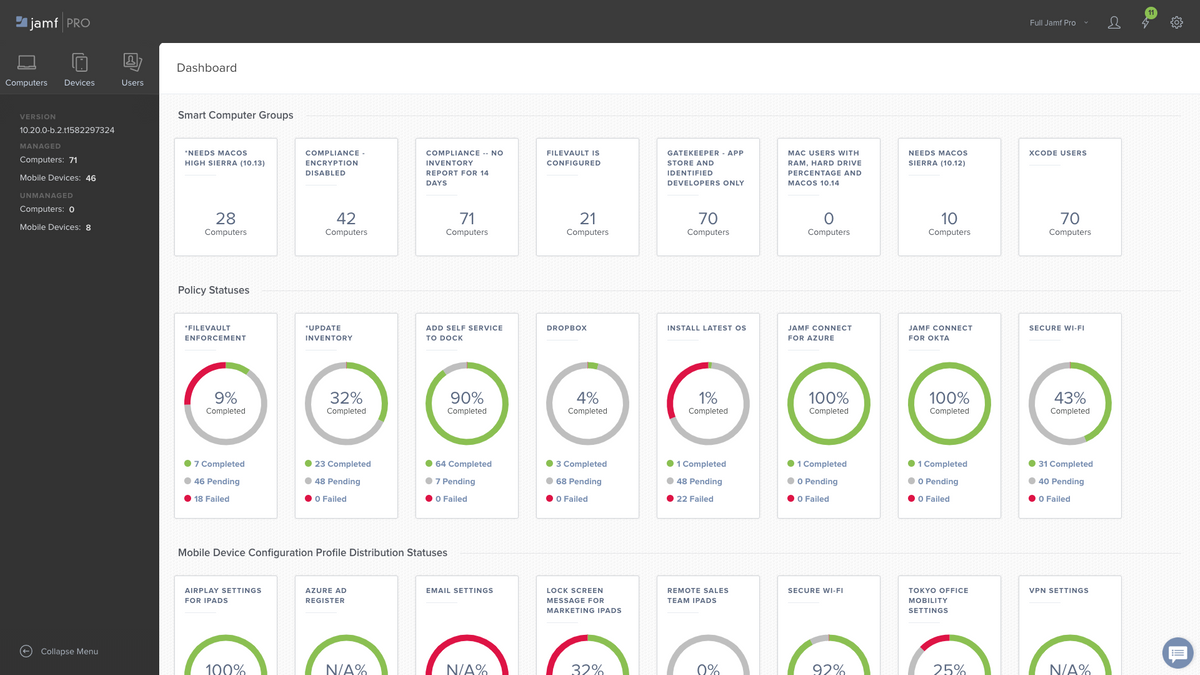
Usability
When you first log into Jamf’s cloud dashboard, you may feel overwhelmed by the sheer number of features it offers. However, once you take some time to explore, you’ll find that it’s a robust platform that can help you manage a fleet of Apple devices with ease.
For example, you can quickly configure LDAP and SMTP servers, as well as create a push certificate. From there, you can access computers, devices, and associated users, along with administration tools like patch management, provisioning profiles, and user group creation.
But that’s not all. Jamf Pro also provides a Settings screen that offers a wealth of options for managing user accounts, setting password policies, managing volume app purchasing, adjusting permissions for Jamf mobile apps, rolling out branding configurations, and managing devices and apps. With all of these tools at your disposal, you can ensure that your Apple devices are running smoothly and securely.
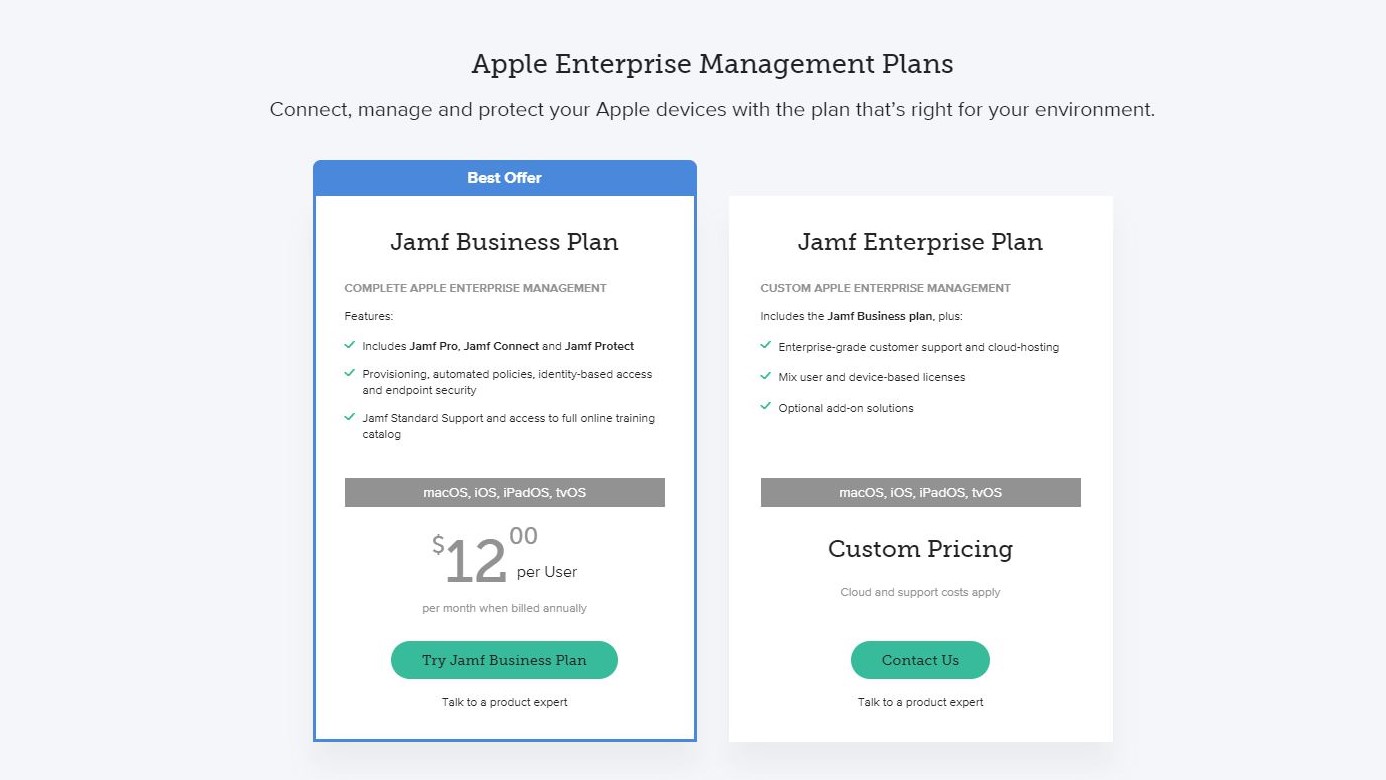
Plans and pricing
Jamf Pro (and Jamf School) is an excellent choice for organizations that use iOS, iPadOS, and tvOS devices, as it is fully compatible with these platforms. The pricing for this package is $3.67 per device per month with annual billing, making it an affordable option for businesses that want to manage their devices.
If you require macOS support, Jamf offers an additional package that you can add to your subscription. This package costs $7.89 per monthly device, enabling you to manage macOS devices alongside your iOS, iPadOS, and tvOS devices. This means you can enjoy centralized management across all devices, allowing you to streamline your workflows and reduce the burden on your IT team.
Overall, Jamf’s pricing options are flexible and affordable, making it an excellent choice for businesses that want to manage their devices effectively and efficiently. Whether you need MDM solutions for iOS, iPadOS, tvOS, or macOS devices, Jamf has you covered with its comprehensive range of packages and pricing options.
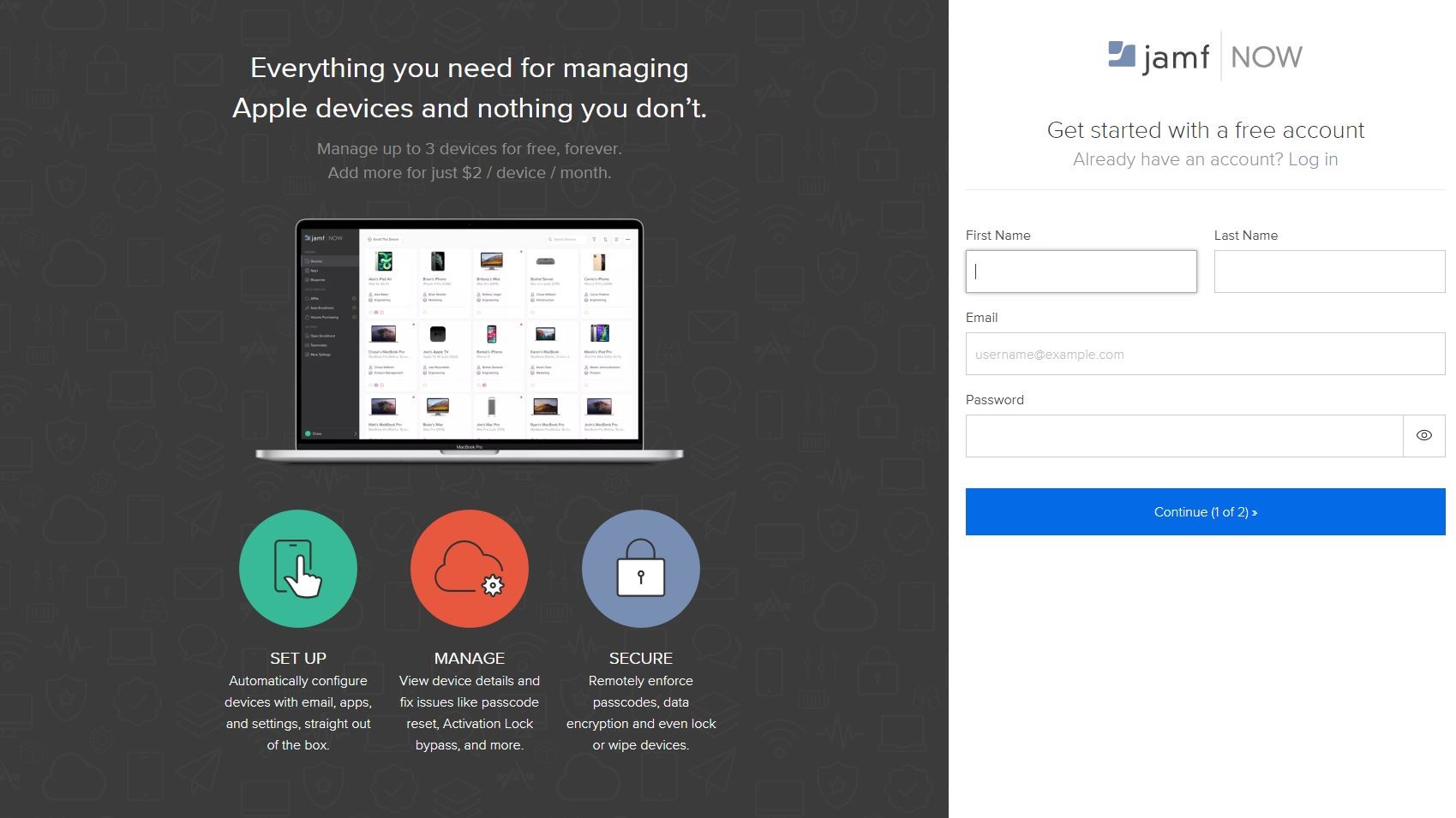
Jamf Now is a simpler solution for Apple device management across smaller teams and businesses, costing $2.00 per device per month, for macOS, iOS, iPadOS, and tvOS.
For more features, Jamf Now Plus costs $4.00 per device per month.
Final verdict
Although the focus on Apple devices may appear limiting, it results in a more intelligent approach to managing device security and updates with Jamf Pro. Mobile Device Management becomes much easier when using hardware from the same manufacturer that runs similar operating systems. However, it becomes ineffective if your organization uses devices from other manufacturers like Android or Windows.
Some organizations may use multiple MDM solutions to manage devices for specific groups of employees, such as board members. Nevertheless, for businesses primarily using Apple hardware, Jamf Pro and its companion products are more appealing. In this market segment, Jamf Pro has all the tools and capabilities to excel.
[ad_2]
Source link

